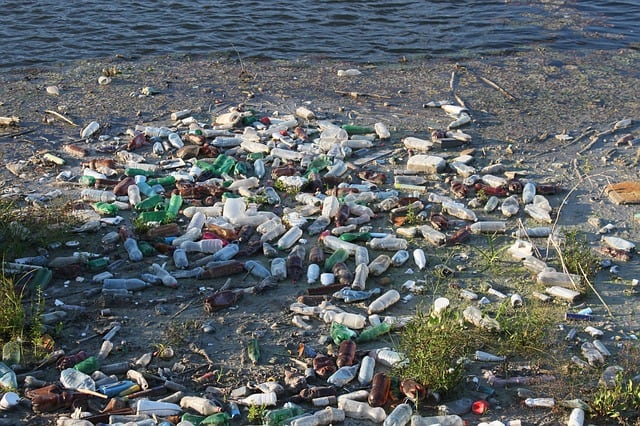Generally, rivers are the main source of life because they provide freshwater, which is critical for the survival of both flora and fauna. But that’s not all — rivers also provide homes to fish, reptiles, mammals, and amphibians.
For this reason, their conservation is necessary for a healthy ecosystem. But unfortunately, that hasn’t been the case till now, and the massive global pollution of rivers is there to prove it.
Even worse, this negligence is slowly affecting the ecosystem and will keep causing damage until proper measures are taken.
The key driving force — the rapid increase in the human population. As the number of people multiplies, so does their use of products and, thus, increased amount of waste in the environment.
Moreover, this problem has been further fueled by industrialization, with toxic waste from industries, urban centers, and agriculture serving as notable pollutants.
But just how big is this problem?
Well, to get an idea of how expansive rivers are polluted, this article lists the world’s top 21 most polluted rivers as of 2023.
1. Ganges River
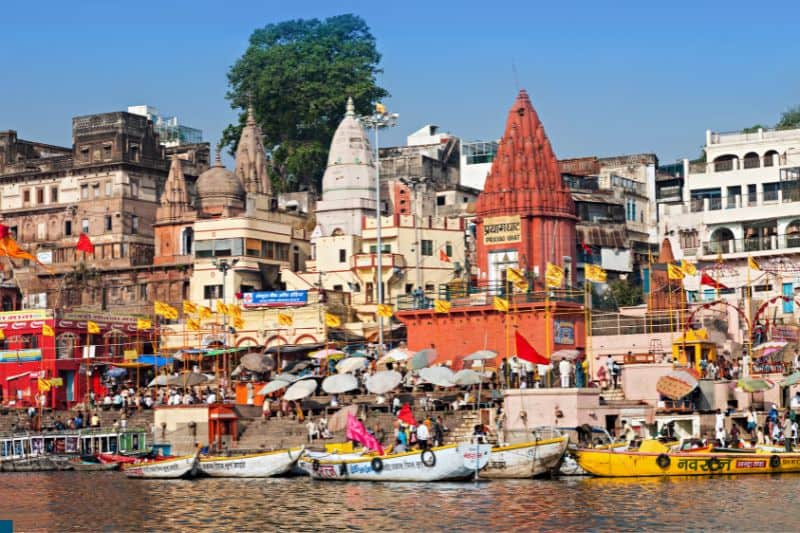
The Ganges is the most sacred river in India. The Hindus believe that the river cleanses people from their sins. It is the third-largest river in the world, with a consumption base of over two billion people.
Shockingly, despite being a source of life for many people, this river is also the world’s most polluted, seeping approximately a billion gallons of raw sewage and industrial effluent daily.
The river has a layer of floating plastic and other waste. Some waste products even come from the performance of religious rituals, providing a poor image of the holy river and making it a central hub for spreading waterborne diseases.
2. Yellow River
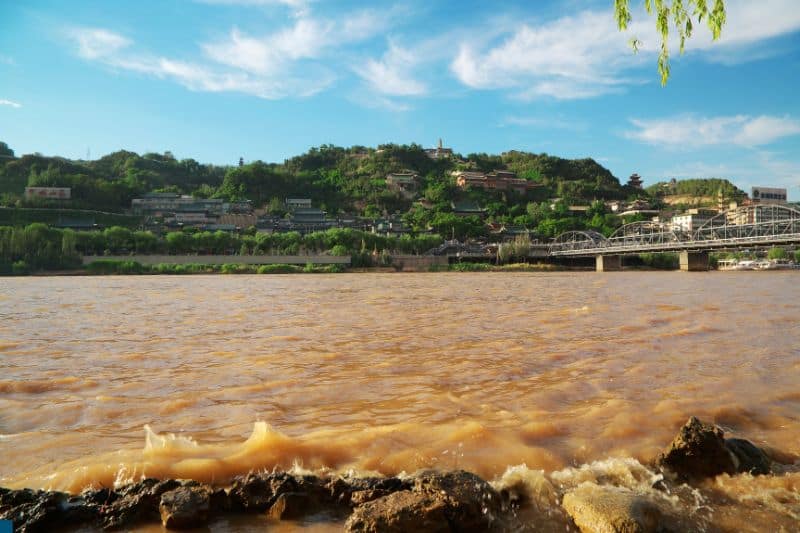
China has the fastest-growing economy, and this is attributed to its rapid industrialization. The Yellow River has yellow sediment ‘loess,’ where the river gets the yellow color.
This river is home to industrial waste from various industries, including chemical factories, rendering the water too toxic even for agriculture. More specifically, the coal mining industry releases a lot of waste back into the river after using the water from it to run its operations.
It is estimated that more than 80% of this river, or the Hai-Huaih Yellow River, as locals call it, is chronically polluted. The same report shows that about 4 billion tons of wastewater, about 10% of the entire volume, is discharged into the river annually.
Shockingly, despite the alarming pollution level, some of China’s population still depends on it for drinking water. This has fueled the emergence of waterborne diseases, cancers, and birth defects. Most recently, there have been efforts to dissuade people from drinking the water from this river since it is unsafe for human or animal consumption.
3. Doce River
The Doce River runs through the Southeastern part of Brazil for 853 kilometers. This river was once a great source of freshwater used by industries for steel-making.
However, on 5th November 2015, the river was contaminated by 60 million cubic meters of iron ore sludge from two containment dams that ruptured. That’s the equivalent of 25,000 Olympic swimming pools or 187 oil tankers of contaminated material!
The heavy metals from the sludge that contaminated the river killed a lot of aquatic life and instantly made the river unuseful for human consumption and uses. Experts state that it will be very difficult for the river to recover from the ecological catastrophe, making it one of the most polluted rivers in the world.
4. Citarum River
The Citarum is arguably one of the most polluted rivers in the world. Like the Ganges, it serves a big population. Indonesia, the home of the Citarum, may not be as populous as India or China, but it is still in the top league with a population of over 277 million, as per a Worldometer update in August 2023.
The river flows in an area with heavy human settlements and about 2000 factories. Industrial waste has increased the mercury levels of the water far above the legislated and original levels, with the pollution happening across the entire length of the river, rendering it dirty and polluted from the source to the outlets.
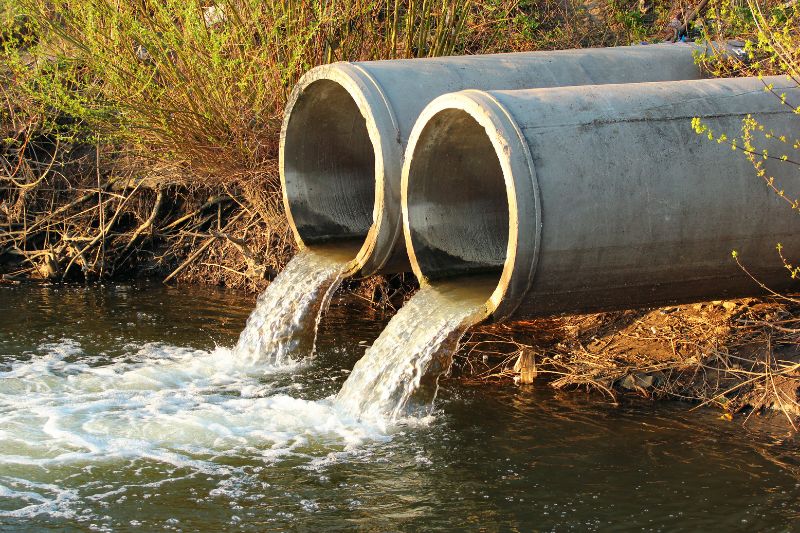
Unfortunately, some people residing near the river are forced to use the water source despite its state. Of course, that comes with severe consequences, with the river causing 50,000 deaths annually and putting the life of 5 million people living on the riverbanks at stake.
5. Mississippi River
The Mississippi River is one of the longest rivers in the world and serves millions of US residents. The river is brown in color, owing to the constant release of waste into the river.
The marine life in the river has reduced alarmingly due to various oil spillages in the past. Industries and farmers using harmful chemicals and releasing them into the river have also contributed to pollution.
A test done on the water shows a high level of nitrogen-based fertilizer run-off, which instead of leaching into the soil, upsets the food chain and reduces the oxygen levels in the water, thus causing the death of aquatic life. The major pollutants are benzene, mercury, and arsenic.
6. Sarno River
This is arguably the most polluted river on the European continent. Flowing through Italy, this river has, over time, become a poison to the residents. The source of the river is clean and safe for drinking, but along the length, it receives waste from industries and agriculture, leading to a polluted river downstream.
The toxicity of the river has caused an alarming increase in liver cancer cases in the area. Moreover, the river floods easily, leading to mudslides and toxicity on earth. Poor waste treatment control has led to the increased pollution of the Sarno.
7. Marilao River
This river is home to millions of Philippine residents who use the water for drinking and irrigation. The pollution of the river is mostly waste from tanneries, dumping, and gold refineries.
The dumping of non-recyclable materials, such as plastic bottles, is also seen on the water’s surface. That’s not all yet, because the water also contains rocks bearing heavy metals, posing a health hazard to the residents.
Like the Sarno, the Marilao River is prone to flooding, often bringing waste to the land and causing soil degradation. The pollution of the water is detrimental to the fish industries in the Philippines since toxic metals such as lead contribute to the death of aquaculture.
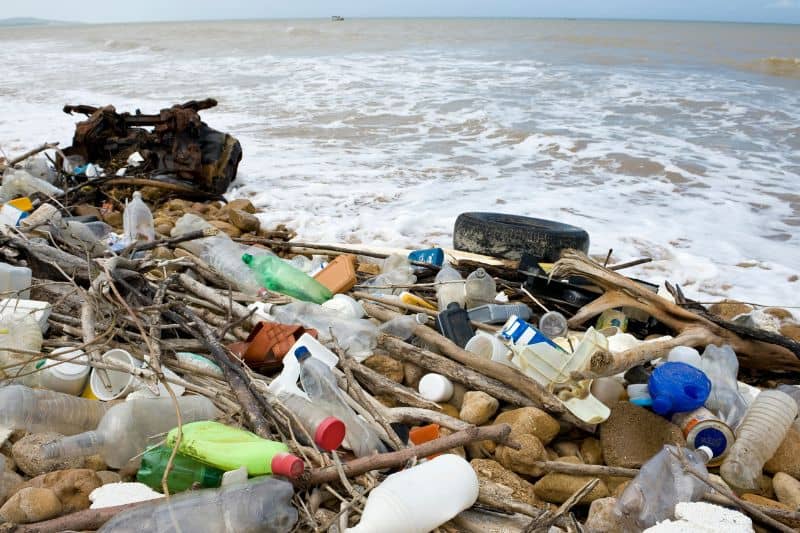
8. Buringanga River
This river is a source of life for millions of Bangladesh residents. It is also a major economic resource for the country since it is the biggest river. The river is mainly polluted by the tanneries that border it. There has also been a lot of human waste in the river.
On top of this, you’ll find floating waste material in the river, such as plastic and dead animals. This has contaminated the water and rendered the discharge so intense that the river has turned black. Consequently, the aquatic life of the river has since died.
9. Mantaza-Riachuelo River
The Mantaza-Riachuelo is based in Argentina and is arguably the most polluted river in South America. Several cleaning initiatives have been established, but the surrounding industries have always neutralized these efforts, releasing millions of tons of sewage released into the river daily.
Also, there is heavy mercury and lead in the river, emanating from the release of chemicals from the industries. This has increased cancer incidences and generally affected the quality of life of people near the river.
Further, the river, also known as the Slaughterhouse River, is home to waste from slaughterhouses and tanneries, which are rampant along the river. As such, on top of all the waste and metals going into the river, it also has a foul smell.
10. Tijuana River
The Tijuana River flows north through the Tijuana River Valley, passing through Tijuana, Mexico. This river runs 120 miles and sometimes carries only a little water. Like all other rivers on our list, it is contaminated and polluted due to the millions of US gallons of sewage being dumped into it every year.
Some of the toxic chemicals that are present in this river are DDT, benzene, lead, mercury, and hexavalent chromium. Together with tons of tires and trash, the river causes a lot of diseases along its path due to its extreme pollution, especially when it dries up and the toxicity in the riverbed goes airborne.
Due to the enormous amount of waste and toxic chemicals in the Tijuana River, it has been considered one of the most polluted rivers in the world. Despite the Mexican government’s allocation of funds over the years to clean the river, its pollution levels remain a critical concern.
11. Jordan River
The source of the river is clean and fit for human consumption. However, as the river flows, it increases in toxicity due to the many waste disposals.
This has caused an increase in the salinity of the water. Most of the pollution comes from the refugee crisis in the country, coupled with the increase in the population, both local and international.
12. Yangtze River
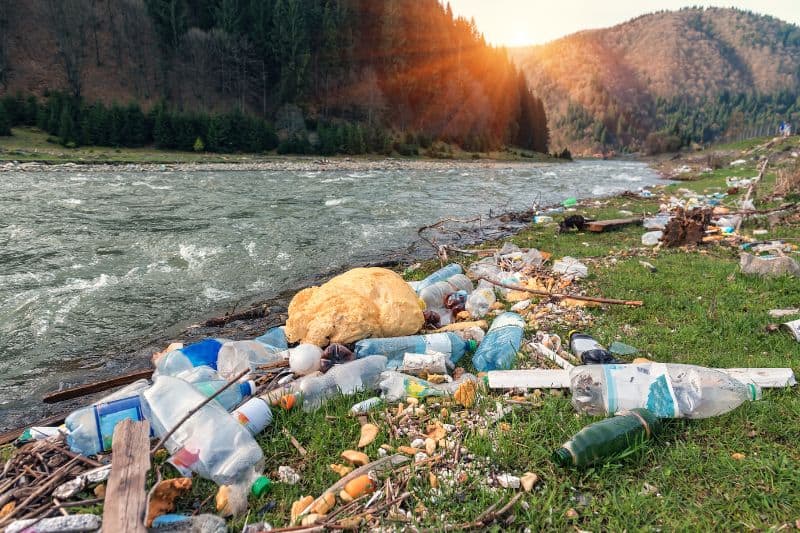
Like the Yellow River, the Yangtze River is found in China. The rapid industrialization in the country has had its toll on the river, which receives a lot of the released water from industrial sources.
As a result, there has been a growth in algae through eutrophication. Of course, this has many negative effects, including the death of aquatic life since there is a minimal source of oxygen in the water.
13. Yamuna River
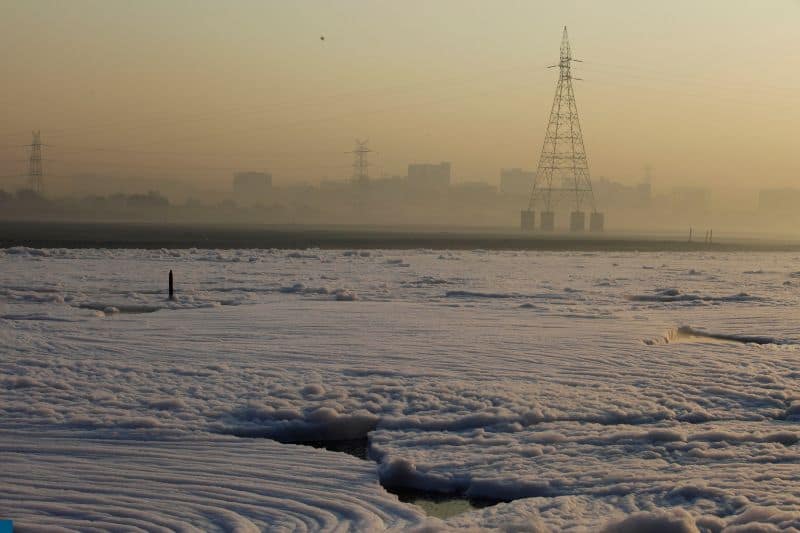
This is the second most polluted river in India after the Ganges. It boasts its source as the Himalayas, but the river gets more polluted as it moves. The contributing factor to the pollution is the poor management of raw sewage by the Indian government. There are few functional sewage plants in the city of New Delhi, which dampens the glory of the big capital city.
Agricultural and industrial waste have also played a role in the pollution of the Yamuna. The river has been so polluted that deploying water treatment efforts may not reduce toxicity. In fact, it’s so polluted that instead of returning a pH test of 7, it’s 11, with the high pH attributed to the traces of poison in the water.
14. River Nile
In Egypt, the prevalent diseases, including bacterial diarrhea, typhoid fever, and schistosomiasis, are intricately linked to unsafe water and inadequate sanitation. In light of this, the primary focal point must inevitably turn to one source: the Nile.
Egypt is the basin’s most populous, agricultural, and industrial country. Therefore, most sewage releases into the river occur in Lower Egypt. Nile pollutants are derived from industrial wastewater, oil pollution, municipal wastewater, and agricultural drainage and include natural cyanotoxins.
Beyond the excessive withdrawal of water from the River Nile for irrigation purposes, the escalating intrusion of saltwater in coastal zones and the diminishing accessibility of fresh water in the delta region have generated significant challenges for the aquatic species inhabiting its waters.
15. Murray-Darling River
The health of the River Murray is critical to the current and future well-being of South Australian residents. Within the River Murray, predominant water quality issues stem from water management efforts to sustain adequate water levels in the primary channel. These measures are imperative to curbing saline inflows upstream. Additionally, challenges arise from the discharge of the Lower Murray Irrigated Reclaimed Area (LMRIA) in the lower weir pool downstream of Mannum.
The other sources of pollution of concern to the EPA include:
- Septic leakage from housing adjacent to the river and floodplain areas.
- Contaminated stormwater run-off from developed land areas.
- Sand dumping from creating beaches (often associated with vegetation removal).
- Managing black and grey water from vessels.
Autochthonous species in the river, one of the most important in Australia, have plunged to 10% of their levels before European settlement.
On the other hand, invasive species have significantly jumped in number, causing an imbalance in its biodiversity that has left nine native species in danger of extinction, affecting aquatic flora and water quality.
16. Indus River
Pakistan’s main river is in grave danger as it is highly polluted due to litter, untreated agricultural, industrial, and municipal waste.
At a recent seminar organized by the Environmental Protection Agency (EPA), Sindh, it was informed that the Indus River is highly polluted. The levels of various parameters are high enough to classify the river as polluted. Even the coliform level, which should not have been present in water bodies, averaged 800 per 100 ml.
Additionally, the constant extraction of water for farming activities and saltwater incursion into the delta are wiping out part of its natural biota.
17. Passaic River
It is 80 miles long in New Jersey. The source is the Mendham, and the mouth is Newark Bay. The Lower Passaic has borne a heavy pollution burden from a century of industrialization in the Passaic River Watershed.
The manufacturing industries have left layers of dioxin, mercury, PCBs, and many other harmful contaminants in the sediment. This pollution, along with harmful disease-causing organisms brought in through combined sewer overflow events, has worsened the river’s water quality.
18. River Danube
A wide-ranging global study has identified the Danube as the river with the highest concentration of antibiotics in Europe and the most polluted on the continent. Chemical waste is its great enemy, not just farming pesticides but waste from Serb factories bombarded as of 1999.
In fact, during the study, samples were taken from the river to taste its antibiotic toxicity. Researchers found traces of up to seven antibiotics, surpassing the safety threshold.

19. River Plate
The River Plate is the second biggest watercourse in South America. Tipping of industrial waste and waste disposal by neighborhood communities is an incessant source of pollution in this river.
In recent years, the sluicing of the water with chemical waste from farming activities has also increased, including it in the list of the most polluted rivers on the planet.
20. River Salween
Located in South-East Asia, the Salween, born in Tibet, meanders through regions of China and Burma. The Salween is considered the most polluted river on the planet, so much so that some fishing communities have abandoned their former trade to sell the glass and plastic they collect from the river.
Over its course, it passes through industrial parks, mostly made up of textile factories, whose polluting waste has provoked an alarming increase in sulfur, cadmium, copper, lead, mercury, and zinc levels in the river.
21. Rio Grande
The Río Grande is the second biggest watercourse in the United States. Two decades ago, many Mexican border communities treated little or no wastewater and instead dumped it into the Rio Grande. Its basin is increasingly polluted by the tipping industrial waste.
Perez’s town is one of many along the Texas-Mexico border where water supplies are threatened by persistent pollution in the Rio Grande due to raw sewage from Nuevo Laredo in Mexico.
Perez, local officials and environmental advocates along the border are calling for the US and Mexico to tackle the problem of Rio Grande pollution more aggressively.
References:
